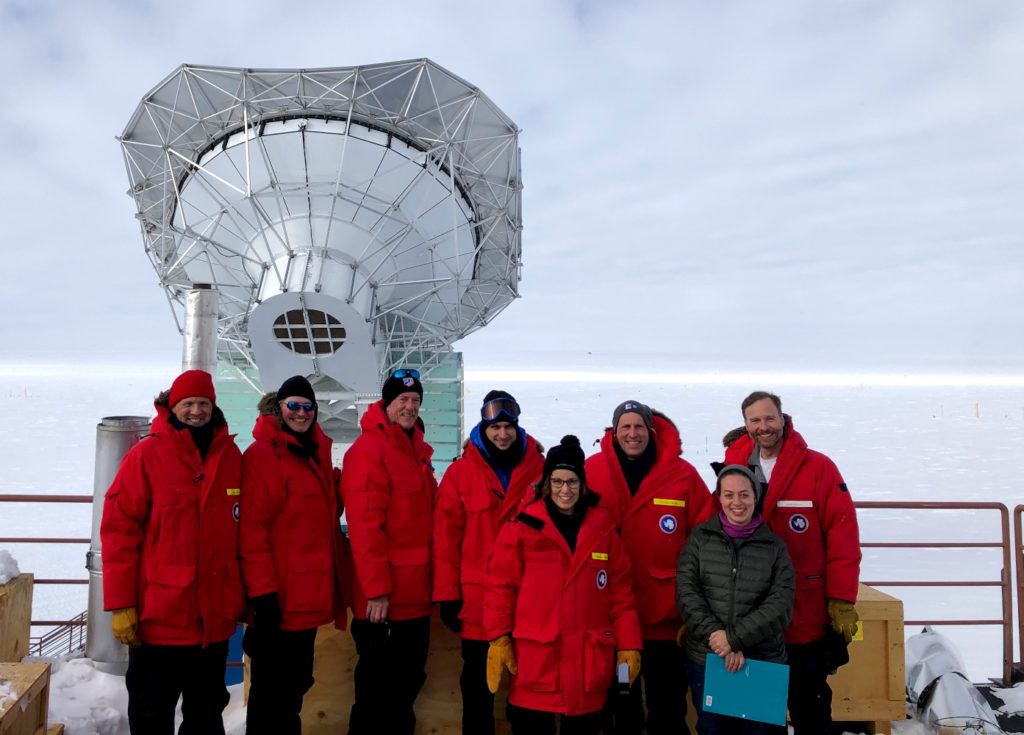Penguins, ice sheets, snow – all things that you’d expect to find in the Antarctic. A physics project? Not so much. But the South Pole Telescope is one of the tools scientists are using to understand the earliest history of our universe. To check out the Department of Energy’s (DOE) investment in this project, DOE Undersecretary for Science Paul Dabbar visited the facility last week.
Unlike telescopes that examine individual planets or stars, the South Pole Telescope is designed to answer questions about the entire universe. About 14 billion years ago, the universe changed in a way that left a very faint “glow” of heat over the whole thing. Scientists call this “glow” the cosmic microwave background (CMB). By mapping the CMB, scientists can better understand what the universe looked like way back when the CMB formed. From there, they can gain insights into the universe’s origin. Because the CMB’s energy changes a little bit as it moves through giant groups of galaxies, mapping the CMB can also help scientists find these groups. These types of observations can help scientists better understand the “dark energy” that is causing the universe to expand ever faster.
While not a very convenient place for a telescope, the South Pole provides some handy benefits if you’re looking to measure the CMB. The water in the Earth’s atmosphere interferes with being able to measure the heat from the CMB. However, the Antarctic is a desert, so it’s very dry. The South Pole is also on a plateau that’s nearly two miles above sea level, above most water vapor in the air. In addition, the South Pole receives almost no sunshine during the winter. That makes it ideal for watching the sky. Another advantage is accessibility—compared to experiments in outer space. Scientists can service their instruments regularly at the South Pole and deploy next-generation detector technology much sooner there than in space.
DOE’s Office of Science partners with the National Science Foundation and several universities to operate the SPT. Because facilities like this are so unique, large teams come together to organize and run them. DOE provided the 16,000-detector payload for the 3rd generation instrument, which greatly increased its sensitivity. This puts the SPT at the forefront of CMB research.
While the South Pole Telescope is at the end of the Earth, scientists are using it to gain insight into the history of the entire universe.
Original post https://alertarticles.info
